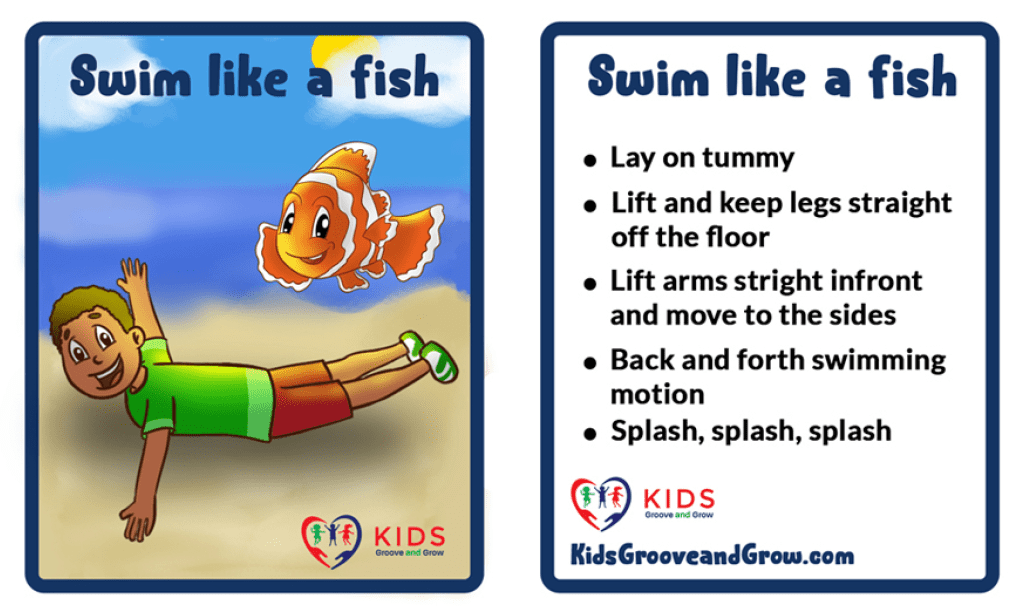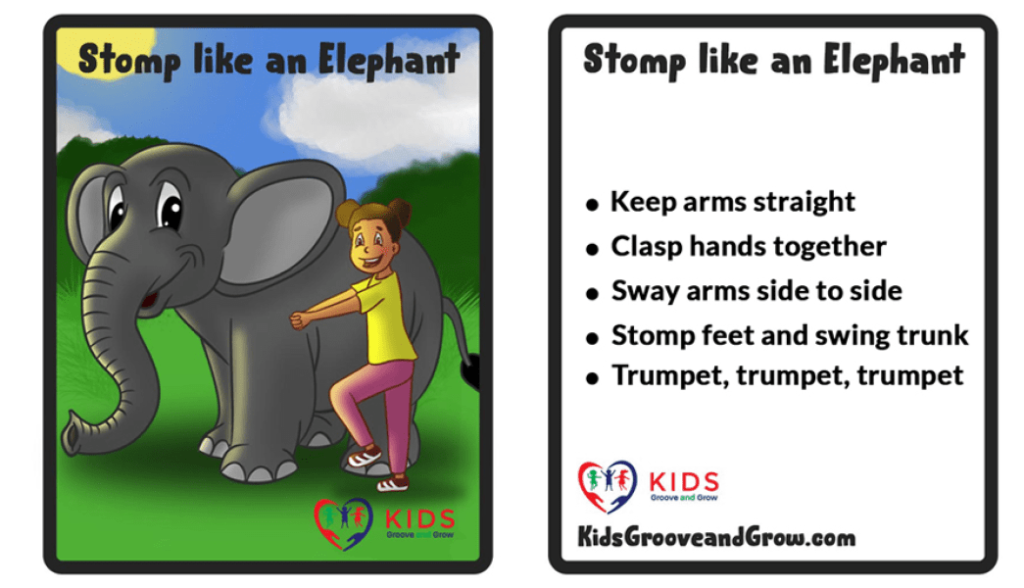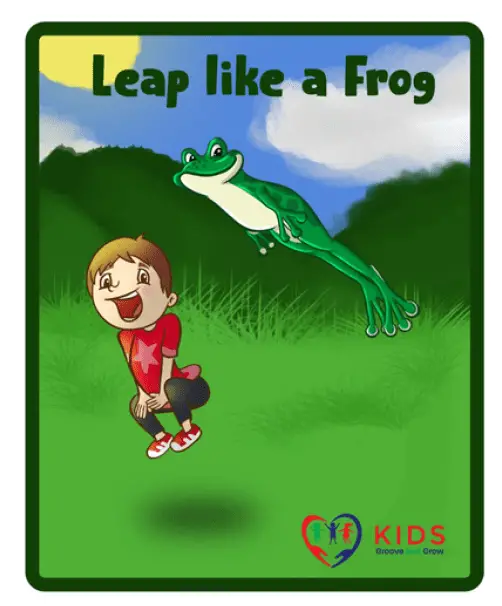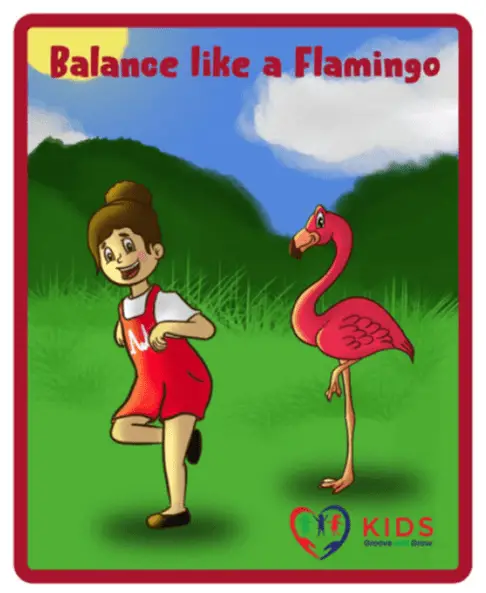Explore the benefits of Animal Walk Exercises
Animal walk exercises are fun and motivating movement activities for young children. They offer many benefits for the mind, body, and spirit. Children enjoy using their imagination to act like animals. It is an engaging and creative way to be active. These enjoyable and challenging exercises promote the development of crucial physical, academic, and emotional milestones.
Animal walk exercises are a great way to get kids moving. Children have an opportunity to practice a variety of imaginative movements that support the development of balance, coordination, flexibility, endurance, and strength. Animal walks encourage movement created by a child’s own body weight. Undoubtedly, integrating bodyweight exercises lays the groundwork for future growth.
Furthermore, research confirms early childhood exercise supports social and emotional skills, longer attention spans, and academic achievement.
“The early Greeks knew well the close relationship between physical and intellectual development. They cautioned that the mind and the body are inseparable. In our schools the physical and the intellectual are often treated as separate and unrelated aspects of the child.” (Church, 2015)
Whether indoors or outdoors, animal walk exercises are a great way of practicing movement. No special equipment is necessary to enjoy the numerous benefits of this fun activity. These motivating exercises provide a positive influence on a child’s development in many ways. Let’s explore the top benefits.
Physical Development
Animal walk exercises are the essence of physical advancement for young children. These physical activities combine muscle strengthening, coordination, endurance, balance, and flexibility.
Children learn to use large muscle groups for fun movements against gravity and learn to work with the resistance of their own body weight. They work on strengthening core muscles, as well as leg and arm muscles.
Additionally, animal walks promote small muscle group strength. When children use their arms, wrists, and hands to pretend to walk like different animals, it advances hand development. Some classic examples of upper extremity strength walks include; crab walk, bear walk, and donkey kicks.
When children participate in different animal walks, they need to change body positions and adjust movements into an organized animal action. Moving little arms and legs in different goal-oriented ways is an excellent way to improve coordination.
Furthermore, tasks that require coordinated movement also require good motor planning to attain movements accurately. Animal walks are a great way to work on organizing new movement patterns.
When children start learning a new movement, it is difficult to perform at first. However, with practice and repetition, children create muscle memory to complete the task spontaneously. They generate new connections and set movement patterns for life.
Several animal walks focus on stretching and lead to increased muscle flexibility. Consequently, better flexibility will improve physical performance, such as balance and posture.
Early on, young children work on keeping steady to advance balance skills. Animal actions that involve jumping, hopping, skipping, and standing on one leg or walking on toes develop balance. In other words, balance is the ability to move or to remain in a position without losing control or falling.
Animal walk exercises are enjoyable activities and provide multiple physical benefits to young children.
Sensory Integration
“Sensory integration is the process of organizing sensory inputs so that the brain produces a useful body response and also useful body perceptions, emotions, and thoughts.” (Ayers)
Animal walk exercises are sensory-rich activities that nurture healthy brain connections. These playful exercises are an excellent way for the purposeful organization of sensory input.
Children benefit from actively participating in a variety of novel and meaningful sensory experiences to develop new brain connections. As a result, more connections form, and a child’s capabilities for learning advance.
“Over 80% of the nervous system is involved in processing or organizing sensory input, and thus the brain is a sensory processing machine.” (Ayers)
Animal walk exercises provide a powerful dose of sensory input to a young child. All animal actions engage multiple senses, such as sense of touch, vision and hearing, as well as vestibular and proprioceptive processing.
Vestibular-proprioceptive activities refer to the simultaneous sensations of the head, arms, and legs when a child engages in active movement. These activities are also known as heavy work activities, and help children develop the body in space awareness.
Body awareness is important for the ability to move efficiently and confidently. Furthermore, it helps children develop gradings of pressure and force, such as gauging the amount of effort to pick up a light pencil or a heavy bag pack.
Animal walk exercises are an excellent way to integrate sensory processes through play. Combining sensory and movement opportunities help children develop enhanced abilities for learning.
Sensory integration is the underlying foundation for academic learning and appropriate social behavior.

Academic Performance
“Study after study shows that physical activity activates the brain, improves cognitive function, and is correlated with improved academic performance.” (Donnelly & Lambourne, 2011).
Academic performance describes factors that may influence student success in school. It includes abilities in executive functioning, academic behavior, and academic achievement.
Physical activity improves brain health. It helps children to learn, think, and remember. Children who participate in physical activity tend to have improved attention, information processing, and memory skills. These children show increased organization, planning, and impulse control abilities. Additionally, physical activity positively influences students’ reading, math, and language arts aptitudes, as well as test scores.
“How does exercise improve learning? Engaging in physical activity increases blood flow and oxygenation in the brain, boosting neural connectivity and stimulating nerve cell growth in the hippocampus, the center of learning and memory.” (edutopia.org)
Animal walks are a perfect way to complement effective learning. It can be designed as a fun exercise lesson or short movement break to balance a stationary, academically filled school day.
“Exercise may prove to be a simple, yet important, method of enhancing those aspects of children’s mental functioning central to cognitive development.” (Tomporowski, 2007)
Boost children’s concentration and focus by providing regular movement breaks throughout the day! Stomp like an elephant, run like a cheetah or move like an inchworm.

Emotional Regulation
Once again, increasing evidence supports the multiple benefits of physical activity on emotional health. Physical activity has a direct impact on a child’s behavior and emotional wellbeing.
Children who regularly participate in movement activities tend to be in a happy mood and have an enhanced ability to cope with different feelings and stressful situations. They are more adaptable, resilient, and adept at emotional communication.
Physical activity assists children with adequate energy levels, improved sleep, and an overall sense of control and wellbeing. Children demonstrate increased self-esteem, positive social interactions, and fewer behavior problems.
Adversely, when children exhibit difficulty with regulating emotions, demonstrating appropriate attention and/or challenges with appropriate behavior, movement breaks could assist calming and self-regulation.
Emotional regulation is a critical component of learning success. Managing feelings, inhibiting behavior, and focusing attention on important tasks is a sophisticated skill for young students. Furthermore, controlling mood, remaining calm, delaying gratification, tolerating unexpected changes, and staying motivated can be a struggle for many learners.
“Exercise promotes chemicals in the brain that improve your mood and make you more relaxed. Specifically, the brain releases feel-good chemicals called endorphins throughout the body. Physical activity reduces anxiety and depresses mood, and enhances self-esteem.”
Mindful movement positively affects our emotions and improves our mood. Implementing regular brain breaks throughout the day will pay off with happier and more capable children. Animal walk exercises provide fun time-out for children and support emotional regulation.
Please check out our Animal Walk Exercise Pack
In Summary
Animal walks are fun and motivating movement activities for children 3 to 10 years old. These enjoyable and challenging exercises promote physical, sensory, academic, and emotional growth. Animal walks can serve as a skillful exercise session, a quick movement break from stationary academic work, or a fun physical challenge for the whole family. These exercises offer engaging and creative ways to help our children improve strength, stay active, support self-regulation, become mentally sharper, and navigate the day in a happier state of mind!
If you enjoyed this article, please share it with a friend!
References
Ayers, A.J., (2005). Sensory Integration and the Child, Understanding Hidden Challenges. Western Psychological Services.
Best, J.R, (2010). Effects of Physical Activity on Children’s Executive Function: Contributions of Experimental Research on Aerobic Exercise, Science Direct, Developmental Review, Volume 30, Issue 4. https://www.sciencedirect.com/science/article/abs/pii/S0273229710000304
Church, K.R., (2015). Children’s Exercise: Facts and Fiction, University of Maryland College Park, Maryland.
Shafir, T., (2016). Using Movement to Regulate Emotion: Neurophysiological Findings and Their Application in Psychotherapy, Frontiers in Psychology.
https://www.ncbi.nlm.nih.gov/pmc/articles/PMC5033979/
Ulifeline.com Exercise is an important aspect of maintaining emotional health.
Tomporowski, P.D., Davis, C.L., P.H. et al, (2008). Exercise and Children’s Intelligence, Cognition, and Academic Achievement. Educational Psychology Review 20, 111.




0 Comments